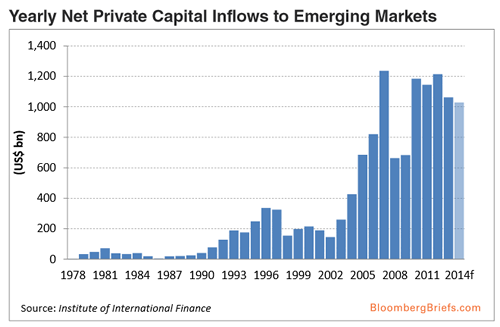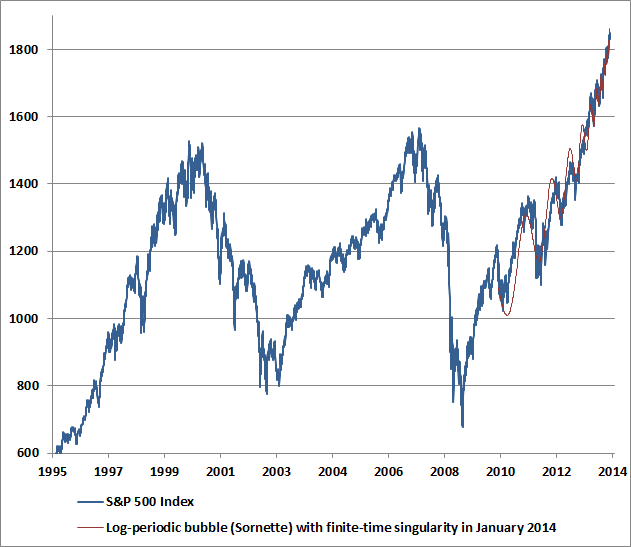Gross OTC Notional Picks Up $605 Trillion (10% Increase) In Gross Notional Derivatives Outstanding
Post on: 23 Апрель, 2015 No Comment

Notional amounts of all types of OTC contracts rebounded somewhat to stand at $605 trillion at the end of June 2009, 10% above the level six months before (Graph 1, left-hand panel). In contrast, gross market values decreased by 21% to $25 trillion (Graph 1, right-hand panel). Similarly, gross credit exposures fell by 18% from an end-2008 peak of $4.5 trillion to $3.7 trillion. Meanwhile, notional amounts of CDS contracts continued to decline, albeit at a slower pace than in the second half of 2008, and CDS gross market values shrank by 42%, following an increase of 60% during the previous six-month period.
A breakdown by the separate derivative categories:
- OTC interest rate derivatives. Notional amounts recovered to stand at $437 trillion at the end of June 2009, 13% above the level six months earlier (Graph 2, left-hand and centre panels; Table 3). The increase was concentrated in maturities greater than five years. Gross market values fell by 14% to $15 trillion, with swaps accounting for most of the decrease. Outstanding volumes of option contracts grew 18% to $49 trillion, but gross market values declined 2%. The amounts of outstanding forward rate agreements (FRAs) went up 34% to $47 trillion, while gross market values declined 7% to $130 billion.
- FX derivatives. Increased market activity was reflected in a 10% rebound to $49 trillion in notional amounts of foreign exchange derivatives outstanding. However, gross market values declined by 31%, partly reversing the 59% increase in the second half of 2008 (Table 2).
- Equity derivatives. In the first half of 2009, notional amounts of equity derivatives rose by 7% to $6.6 trillion, while market values remained 16% below the level of end-year 2008.
- Commodity derivatives. Amounts outstanding of commodity derivatives stabilised in June 2009 at $3.7 trillion, after a 71% drop in the second half of 2008. While gold contracts recovered 28%, to stand at $0.4 trillion outstanding at the end of June 2009, other commodity derivatives continued to slide, falling 5% to $3.3 trillion. Gross market values of commodity contracts declined further (by 17%).
- Credit default swaps. Notional amounts outstanding of CDS contracts continued to shrink (by 14%, after a 27% reduction in the second half of 2008), to $36 trillion at the end of June 2009 (Graph 2, right-hand panel; Table 4). The gross market value of CDS contracts declined by 42%, due to declines in inter-dealer business and contracts with other financial institutions.
The key question is what is the reason for the divergence between the gross and net notional. Ironically, the artificial environment in risk pricing is likely the cause for the divergence, which means that once the government pulls back the wool from everyone’s eyes and risk is priced properly once again (we are beginning to doubt that will ever happen due to the Fed’s procyclical intent of making risky assets purchasable into infinity due to the need to pump the market ponzi in perpetuity), the true market value of net risk exposure will skyrocket and catch numerous financial institutions unprepared again. As the net variation is likely about $5-10 trillion, this sets the seeds for the next major black swan. Moody’s shares some thoughts on this observation.

The decline in the market value of OTC derivatives can be viewed as a reduction in systemic risk insofar as it has contributed to market-wide deleveraging, a reduction in counterparty credit exposures and contract replacement costs in the event of potential dealer failure. However, the nature of this decline in systemic risk is transitory, not structural. It is explained by the fall in market indicators that drive derivatives pricing interest rates, credit spreads and volatility.
Because derivative receivables and payables are a big component of dealers balance sheets, the fall in their market values has helped dealers de-lever (or, at least, avoid re-levering). For example, for Goldman Sachin the first six months of 2009, derivative receivables declined 31% to USD 90 billion (10% of total assets), while the size of the balance sheet stayed flat. Reduced dealer receivables also mean that dealers are exposed to lower (although, obviously, still very large) counterparty credit risks, while, symmetrically, lower dealer payables mean that individual dealers pose a directionally lower credit risk to the rest of the system.
It would take structural changes, such as targeted central clearing and potentially higher capital requirements, before one could conclude that the systemic risks in the OTC derivatives market have been reduced for good. The market and regulators appears to be headed in this direction, but final implementation details are as yet unknown. For now, while we recognize the deleveraging that has occurred at major investment banks, we remain mindful that conditions can change and that risks still remain.
The key issue here: unless Bassel III or IV or whatever the latest version of the risk doctrine is, manages to factor out net/market variations even in the face of obviously counterintuitive gross exposure increases, then banks like Goldman (see example above) will be able to hide under the rug that they are on the hook for a whole lot more in risk exposure than they disclosed in their SEC filings. This sets the seeds for the next round of risk flaring, as the amounts represented by the mountain of OTC derivatives, even when netted out, are enough to wipe out a firm like Goldman Sachs in minutes, if not seconds. One thing that is sure, is that neither Geithner, not Frank or Kanjorski will address this issue in any approach to systematic risk regulation: the first, because he does not want to impair his favorite investment bank’s profit generating potential, and the latter, because frankly they have no idea what any of the abovementioned means. Thus as nothing will reasonably change, and the inflection point for gross notional rerisking is already upon us, from here on out it is just a matter of time before the entire financial system is on ropes once again, this time however with TARP and other gimmick bailouts an impossibility.
Some definitions courtesy of the BIS:
Notional amounts outstanding: Nominal or notional amounts outstanding are defined as the gross nominal or notional value of all deals concluded and not yet settled on the reporting date. For contracts with variable nominal or notional principal amounts, the basis for reporting is the nominal or notional principal amounts at the time of reporting.
Nominal or notional amounts outstanding provide a measure of market size and a reference from which contractual payments are determined in derivatives markets. However, such amounts are generally not those truly at risk. The amounts at risk in derivatives contracts are a function of the price level and/or volatility of the financial reference index used in the determination of contract payments, the duration and liquidity of contracts, and the creditworthiness of counterparties. They are also a function of whether an exchange of notional principal takes place between counterparties. Gross market values provide a more accurate measure of the scale of financial risk transfer taking place in derivatives markets.
Gross positive and negative market values: Gross market values are defined as the sums of the absolute values of all open contracts with either positive or negative replacement values evaluated at market prices prevailing on the reporting date. Thus, the gross positive market value of a dealers outstanding contracts is the sum of the replacement values of all contracts that are in a current gain position to the reporter at current market prices (and therefore, if they were settled immediately, would represent claims on counterparties). The gross negative market value is the sum of the values of all contracts that have a negative value on the reporting date (ie those that are in a current loss position and therefore, if they were settled immediately, would represent liabilities of the dealer to its counterparties).
The term gross is used to indicate that contracts with positive and negative replacement values with the same counterparty are not netted. Nor are the sums of positive and negative contract values within a market risk category such as foreign exchange contracts, interest rate contracts, equities and commodities set off against one another.
As stated above, gross market values supply information about the potential scale of market risk in derivatives transactions. Furthermore, gross market value at current market prices provides a measure of economic significance that is readily comparable across markets and products.
Current credit exposure and liabilities: Current credit exposure represents the gross value of contracts that have a positive market value after taking account of legally enforceable bilateral netting agreements. Liabilities arising from OTC derivatives contracts represent the gross value of contracts that have a negative market value taking account of legally enforceable bilateral netting agreements.














